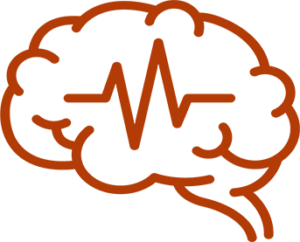
Hjalte F, Carlsson H, Lindgren P
Påverkbara riskfaktorer och hjärnans sjukdomar
The report is written in Swedish with a summary in English
The brain is the most central organ in the body, and brain diseases often have major consequences for the person affected, their families and society at large. It is well known that lifestyle habits have a major impact on our health and that the risk of future disease can be influenced by changing them.
The purpose of this report was to study how much of the incidence and costs of brain diseases can be linked to modifiable risk factors in the adult population in Sweden in 2022. The diseases included in the analysis were Alzheimer’s disease, other dementia, depression, generalized anxiety disorder (GAD), Parkinson’s disease, schizophrenia and stroke. The risk factors included were tobacco smoking, dietary habits, low levels of physical activity, social isolation, overweight and obesity, prolonged stress and heavy alcohol consumption.
The analysis has used a well-established methodology designed by the World Health Organization (WHO), based on associations between risk factors and diseases, together with the prevalence of these risk factors in the Swedish population.
The calculations show that 43 percent of the disease burden for stroke can be linked to the included risk factors. The corresponding estimates were 39 percent for Alzheimer’s disease, 30 percent for other dementia, 13 percent for depression, 13 percent for GAD, 9 percent for schizophrenia and 7 percent for Parkinson’s disease. These proportions are largely due to the number of known risk associations, which are much higher for stroke, Alzheimer’s disease and other dementia than for the other diseases.
The main risk factor was low level of physical activity, which was associated with 13 percent of the disease burden of GAD, 9 percent of Alzheimer’s disease, 8 percent of stroke, 7 percent of other dementia, 7 percent of Parkinson’s disease and 5 percent of depression. Low level of physical activity is the risk factor associated with the highest share of disease burden for Alzheimer’s disease (9%), closely followed by social isolation. Low levels of physical activity are also associated with the highest proportion of disease burden for GAD and Parkinson’s disease. Social isolation is the risk factor associated with the highest proportion of the disease burden of other dementia (9%). Dietary habits are associated with the highest proportion of the burden of disease for depression (8%). Tobacco smoking is associated with the highest proportion of the burden of disease for schizophrenia (9%). Overweight and obesity are associated with the highest proportion of the burden of disease for stroke (20%). For the age group 18-29 years, exposure to bullying is the risk factor associated with the highest proportion of disease burden for GAD (11%) and depression (9%), closely followed by low levels of physical activity for GAD (10%) and dietary habits for depression (almost 9%).
The costs for brain disorders are high, although in this study they are not summarized due to the risk of double counting. Costs are highest for Alzheimer’s disease and other dementia, and for depression. The report also highlights the lack of current cost studies for depression, GAD and schizophrenia in particular.
IHE RAPPORT 2024:3, IHE: Lund
